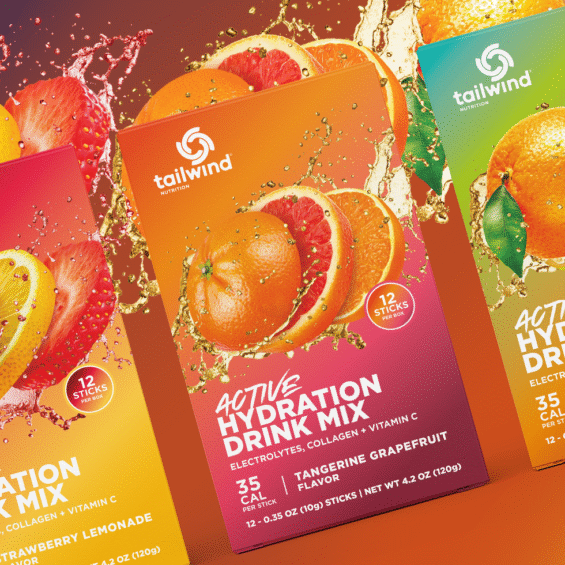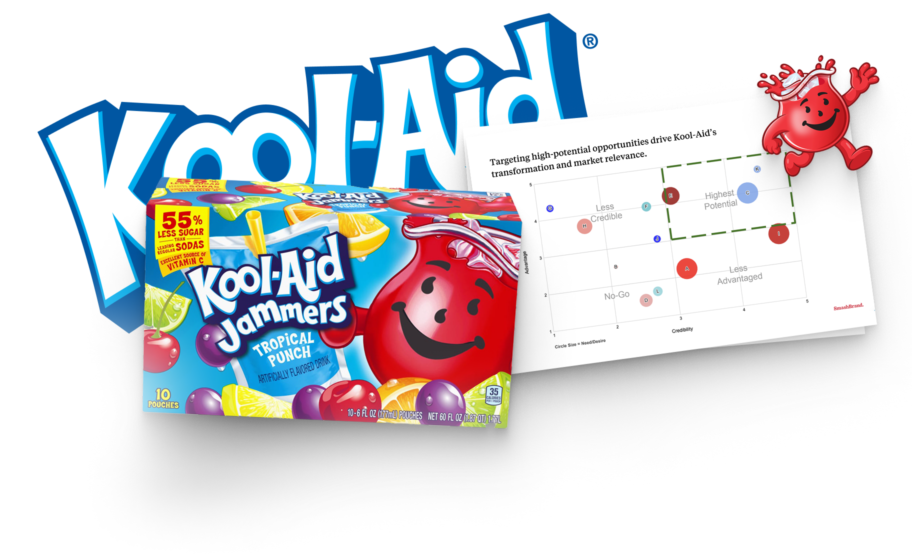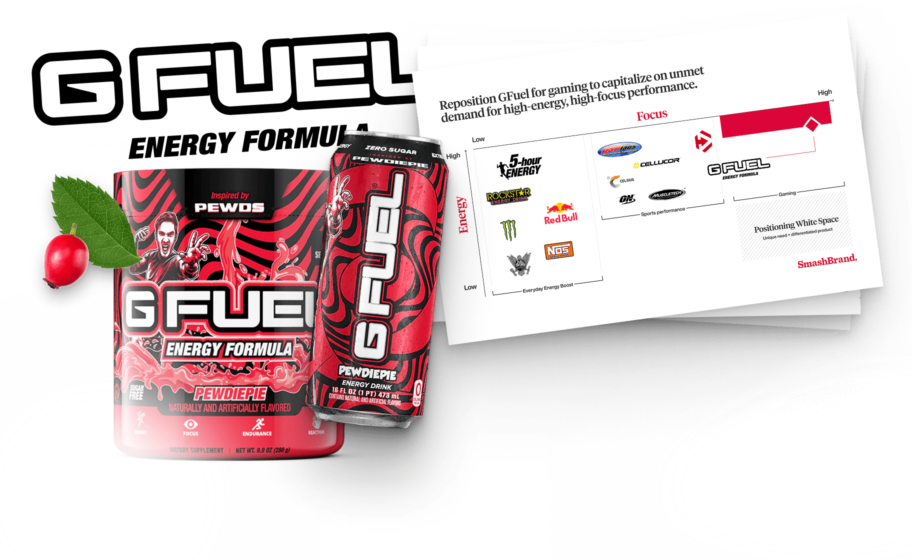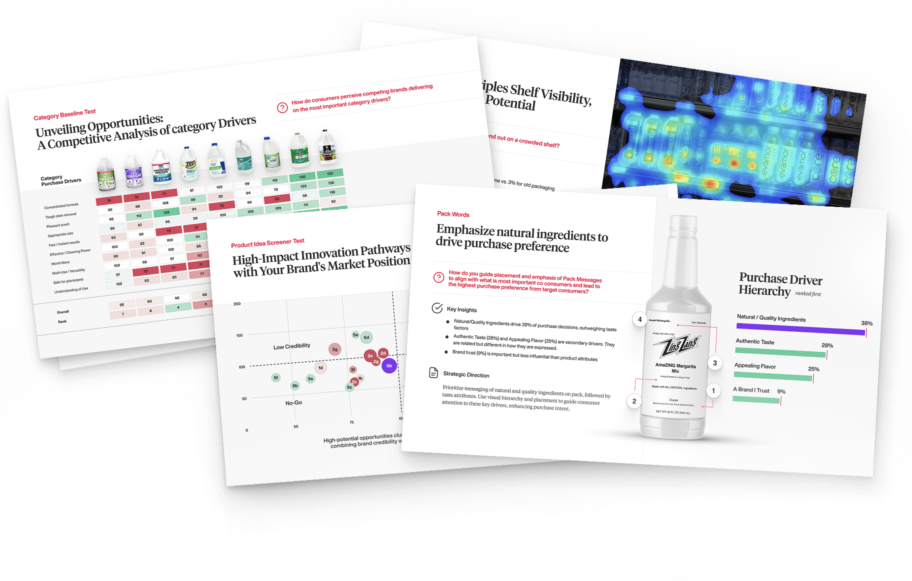User-generated content (UGC), such as customer photos, videos, and reviews, adds authenticity to CPG advertising. While repurposing UGC in paid campaigns can boost engagement and trust, it’s also smart to invest in skilled content creators who can guide or enhance submissions to align with brand standards. The result is relatable, high-performing content that feels both real and professionally on-brand.
Whether you’re a new CPG brand or an established category leader, this article will help you understand CPG marketing in this new economy. We discuss the latest CPG trends, strategies, and challenges for consumer packaged goods (CPG) brands, providing examples of winning CPG marketing strategies.
Having worked alongside internal CPG marketing teams at the world’s leading brands and external brand marketing agencies, we provide a unique look at what’s working when marketing consumer packaged goods. Let’s dig into marketing for the CPG industry.
What is CPG marketing?
CPG marketing, also known as consumer packaged goods (CPG) marketing, promotes and sells products that consumers use daily. Consumer products encompass a wide range of items, including food, beverages, cleaning supplies, personal care products, and other household essentials. CPG marketing can take many forms, including advertising, public relations, promotions, and digital marketing.
CPG marketing aims to promote product awareness, foster brand loyalty, and drive sales in a highly competitive market. With the rise of e-commerce, integrated commerce, and click-and-collect, changing consumer behaviors have led to the evolution of CPG marketing, which now includes direct-to-consumer strategies and a focus on understanding consumer data to create effective marketing campaigns.
Successful CPG marketing requires a deep understanding of consumer behavior, market trends, and innovative product development strategies.
CPC branding vs. marketing.
CPG branding focuses on creating a distinct and recognizable brand identity for consumer packaged goods (CPG) products. It involves designing logos, packaging, and messaging that convey the brand’s values, personality, and unique selling proposition. On the other hand, CPG marketing encompasses the strategies and tactics employed to promote and sell CPG products.
What is the current state of CPG marketing?
While every CPG industry magazine leans heavily on direct-to-consumer topics, the category is trending more for information than for brands winning in the marketplace. Direct-to-consumer is still a low-risk model for mom-and-pop brands promoting their consumer goods, but omnichannel is how CPG brands will succeed in 2023.
COVID-19 gave brick-and-mortar CPG retailers the push to become more relevant to online shoppers. This rapid increase in ready-for-pickup orders necessitated significant investments in app and website development. The pandemic completely reframed how CPG retailers promote packaged goods.
Here’s a look at a few ways national retailers use their online presence to drive location sales.
- Synchronized loyalty programs
- Free samples at the point of pickup
- Recommended items
We’ve previously discussed Bob’s Red Mill’s online marketing strategy and how they are doing things right. Yet, despite all that success, they have eliminated their direct-to-consumer model and now focus solely on retail partnerships.
Despite heavy direct-to-consumer investments, Bob and his team believe they will capture more market share by aligning with the new approach the CPG industry is taking to drive sales to retail stores.
Returning to retail doesn’t mean Bob’s Red Mill needs to abandon marketing channels that contribute to online brand awareness. Instead, they can turn visitors into customers through coupons, email marketing, contest sign-ups, and recipe-focused content marketing.
Marketing to different demographics.
Personalization remains a growing trend in CPG marketing. As such, CPG marketers need to have a firm understanding of what influences their target demographic to make a purchase. By understanding their target audience,
Baby Boomers: As one of the most important demographic groups, Baby Boomers are a heavy target for CPG marketers. They value quality and have substantial brand loyalty. CPG marketers should focus on creating messaging that speaks to their desire for comfort, security, and nostalgia.
Generation X: Gen Xers are a smaller demographic group with significant purchasing power. They are family-oriented and value convenience and quality. CPG marketers should focus on creating messaging that resonates with their customers’ desire for ease and simplicity in their products.
Millennials: With their immense buying power and affinity for digital channels, Millennials are a vital demographic for CPG marketers. They prioritize health and sustainability in their purchasing decisions and are more likely to experiment with new products. CPG brands should create products and messaging that align with millennial values.
Generation Z: As the newest generation to fully enter the market, Gen Zers are tech-savvy and socially conscious. They value authenticity and personalization in their products and want to align themselves with brands that reflect their values. CPG marketers should leverage social media and influencer marketing to reach this demographic.
Generation Alpha: The youngest demographic group, Gen Alpha, is still emerging as a consumer group. The Gen Alpha demographic is digitally native and appeals to packaging innovations. While the packaging may WOW the gen alpha consumer, brands should focus on creating messaging that speaks to parents and caregivers, who are the primary purchasers for this demographic.
For demographic marketing, CPG brands must consider multiple target markets. Often, “influencers” impact different demographics, making it critically important for CPG brands to understand how to integrate various demographics into their marketing plans effectively.
Marketing to consumer interests.
Another critical aspect of marketing a CPG brand is understanding the consumer interests of your specific demographic(s). Understanding their interests, hopes, and desires allows CPG brands to become more than just a product to their target consumer. Here’s a look at four primary consumer interests.
Health and wellness: Consumers are increasingly interested in products that promote good health and well-being, including organic, natural, and non-GMO foods, plant-based alternatives, and supplements.
Sustainability: With growing concerns about the environment, consumers are increasingly seeking products that are eco-friendly and have a low carbon footprint, such as those with recycled packaging, biodegradable materials, and products made from renewable energy sources.
Convenience: Busy lifestyles have led consumers to seek products that save time and effort, such as ready-to-eat meals, meal kits, and online grocery shopping.
Value: In the face of economic uncertainty, consumers seek products that offer the best value for their money, including bulk discounts, loyalty programs, and rewards for repeat purchases.
Our ideal consumer is interested in all these points of interest, but the weight each individual assigns to each point varies. That is why you must lean on data to understand your customers.
Leaning on data to understand your target audience.
Whether you take a D2C or B2B approach, you need consumer data to create the most effective CPG marketing strategy. All CPG categories have enough competitors that it requires us to fully understand our target consumers. Your marketing plan must have a detailed understanding of the potential consumers you hope to reach, along with a key insight into their characteristics. The only way to achieve this is through primary consumer research.
Here are three ways (you should use all of them) to better understand your ideal consumer and how to find this information.
Existing consumer insights.
There are two primary methods for finding existing consumer data. The first and least often used method is the traditional use of tools for search engine marketing. Tools such as Google Analytics and Ahrefs are excellent resources for uncovering CPG insights into what consumers are seeking online. It also helps you determine when they are searching for them and what questions they have about the topic.
Example: Let’s say you are considering how to market your natural ghee product. Looking up the matching search terms for ghee reveals that the most commonly asked question (apart from “What is Ghee?”) is whether ghee is healthy. While we might assume that most people recognize Ghee as beneficial for their health, we now see a need to showcase its health benefits within our advertising.
The second way we can access information about our consumers is through consumer demographics and customer intent data. To access these, you must open your wallet to utilize online reports and AI tools that provide detailed information about the consumer and their purchasing intent.
Creating consumer insights.
CPG brands, big and small, should develop their consumer demographics and buyer intent data. While we offer consumer testing for CPG brands, you can also utilize social media and your existing email list to gain a deeper understanding of your target consumers.
Example: Let’s say we are a healthy snack vending machine company. To create a more intelligent intent-based marketing strategy, we made a Facebook group poll to determine which healthy snacks parents prefer.
Those with an existing email list can create simple surveys. But since you are entering people’s inboxes, you want to ensure your message is clear and drives them to take action.
Sooner than later, “homebrew” insights will not be enough. A company must engage with a CPG brand strategy agency to capture critical insights through CPG market research.
Testing consumer insights.
Do you believe everything that everyone tells you? Of course not. It’s human nature to say one thing and do another. We often have the best intentions, but our decisions frequently shift in unexpected ways. We can say the same about existing consumer insights and the data we collect through our efforts.
The fact is that consumer intent differs from purchase intent. To determine the validity of your CPG insights, put your consumer insights and research to the test.
For example, if you’ve determined that moms believe healthier gummies make for a great snack, test their performance in several vending machines before committing to a large run. We aim to demonstrate product-market fit before making substantial capital investments.
How does consumer intent differ from purchase intent?
Consumer intent is a subjective conclusion drawn when a person is asked a specific question about their preference or purchasing behavior. Purchase intent is a consumer’s uninterrupted act of deciding what product to purchase.
CPG product development strategies.
With this data, it’s time to move to product development. Of course, this is assuming you have yet to develop your product. If you create your CPG marketing strategy post-production, consider this for future products or when improving a formula.
Your product design is one of the key secrets to success in the CPG industry and is at the core of your marketing strategy. David Ogilvy is famous for saying, “Great marketing only makes an inferior product fail faster.”
If the product strategy is the initial marketing effort for a CPG company, then it’s essential to look at innovation and new product development strategies through this lens.
- Are you considering adding Ghee to your natural cookie recipe? How does that impact your marketing?
- Are you considering adding cane sugar to your low-calorie beverage? How does that impact your beverage packaging design?
- Does your protein bar require refrigeration? How will that affect your retailer relations?
These questions will impact your future advertising and marketing efforts, so it is essential to address them with your product development and marketing teams.
A note on B2B CPG marketing.
What comes first? The consumer or the store buyer? You cannot separate these two selling forms in a CPG marketing campaign, like the chicken and the egg. However, with numerous CPG startups knocking on the door and asking for access, B2B CPG marketing is a must if you want to be in the door.
What is a B2B marketing strategy?
A B2B marketing strategy is a committed effort where you allocate time, money, and resources in a structured way to target the desired retailer. Successful B2B marketing strategies should make the retail purchaser feel as if they have no choice but to take an interest in your brand. A B2B CPG marketing includes:
- Strategic selling by brand managers.
- Print advertising in trade magazines.
- Trade show booths and event experiences.
- Digital marketing targets the decision-makers of retailers selling consumer packaged goods.
Omnichannel CPG brands must remember that it is crucial to recognize where a transaction first occurs. Often, a business becomes your initial “target customer.”
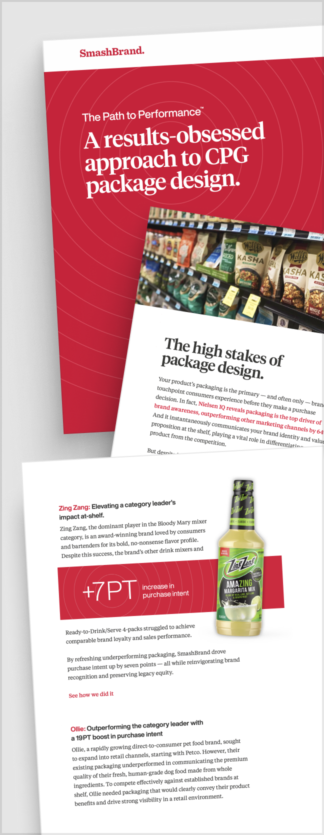
Path to Performance™
Taking a results-obsessed approach to CPG package design.
Discover how SmashBrand’s proprietary process, rooted in scientific principles, informed by data, and validated by your target audience, eliminates the guesswork from package design and delivers guaranteed results.
CPG advertising strategies.
They say it takes money to make money, including increasing consumer demand through advertising. While some of your marketing efforts will be organic, others require a committed ad spend through social, offline, or with a retail media network. This section will examine the most common advertising strategies employed by CPG brands and offer a unique insight into each.
Digital advertising.
When you look at Rebel Ice Cream’s minimalistic packaging design, it’s easy to see why they would choose advertising that strips away the graphic influence. While many brands have shifted their advertising budgets to the latest social platforms, hoping to attract potential customers, Rebel is using good old Google ads.
At approximately $2.00 per click, Rebel is getting valuable audience data insights they can leverage through advertising platforms.
Print advertising.
In marketing, there’s an understood principle that we should enter the conversation in the customer’s mind. This ad proves that Pure Leaf recognizes consumers’ battle about unsweetened tea being hard to stomach and sweetened tea being high in sugar. Here, compromise is the key to carving a niche in this established beverage category.
Sometimes, the winning CPG advertising campaigns come through with the simplest of messages. Pure Leaf’s ad campaign in HGTV magazine is an example of this.
In-Store advertising.
One of the best ways to enter the existing conversation in the customer’s mind is to create a pattern interrupt at the point of the consumer being in a state of buying. In-store advertising is one of the most effective methods, yet only a small percentage of brands allocate sufficient attention to it or recognize its marketing effectiveness.
CPG brands should invest more money in in-store marketing and dedicate more time to nurturing the retailer relationship so that these opportunities present themselves. Often, in-store marketing requires a brand to think creatively and initiate the conversation. Whether it’s a window display or an end cap, making the request is how most of these opportunities happen.
User-generated content.
It’s easy to get caught up in the latest marketing opportunity, but most brands often perform poorly because their shelf presentation is stale and doesn’t resonate with buyers. CPG brands must understand the role of product packaging design in a CPG marketing strategy.
Whether it’s when a product launches or new competition arises, the packaging design for retail stores influences whether consumers consider or reconsider your brand.
Packaging design case study.
Reaching into the SmashBrand swipe files, here’s a look at a Yucatan packaging design that increased purchase intent in multiple nations. It’s a compounding effect because the retailer gives you more shelf space when you increase the likelihood of a consumer making a “yes” purchasing decision.
Yucatan became more relevant to millennials and could influence consumer behavior by creating more “party-friendly packaging.” We determined that this was a purchase driver for most guacamole consumers based on consumer data.
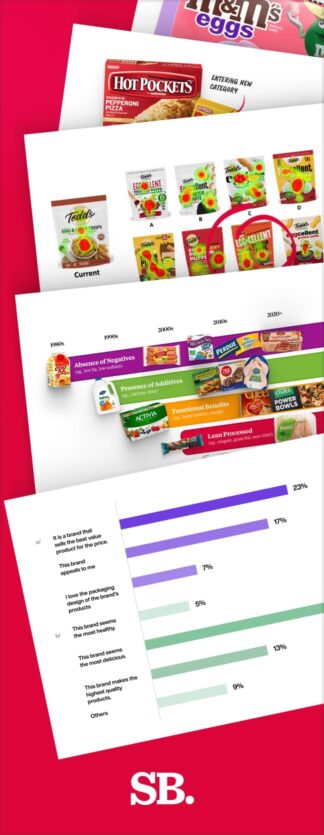
Nice Package
Don’t miss out on our monthly newsletter Nice Package!
Each month, we deliver a data-driven newsletter directly to your inbox, unpacking a critical topic in the FMCG & CPG industry.
"*" indicates required fields
Marketing doesn’t end at the point of purchase.
While social media may have influenced the initial purchase, it may also be the reason for losing the next one. It is incorrect to assume that we earn brand loyalty after a single or a few transactions. CPG shoppers are constantly on the lookout for the next best thing. Create your marketing strategy to reinforce a consumer’s intent beyond the initial purchase.
Want to outperform the competition?
SmashBrand is a CPG brand development Agency that helps consumer brands win on-shelf. If you’re a brand in the CPG market seeking a design team to deliver predictable retail performance, we can help. Book a time to discuss your project with our team.
Subscribe to
Nice Package.
A monthly newsletter that unpacks a critical topic in the FMCG & CPG industry.
Free Resource.
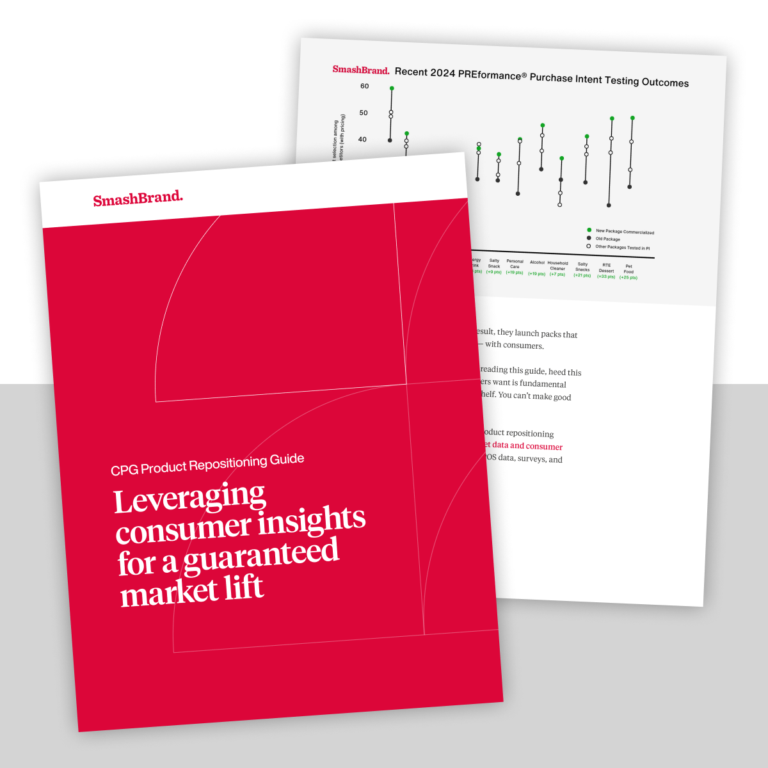
CPG product repositioning guide.
Explore the five undeniable signs your CPG product needs repositioning along with strategies for leveraging consumer insights for a guaranteed market lift.
Learn More About CPG product repositioning guide.
